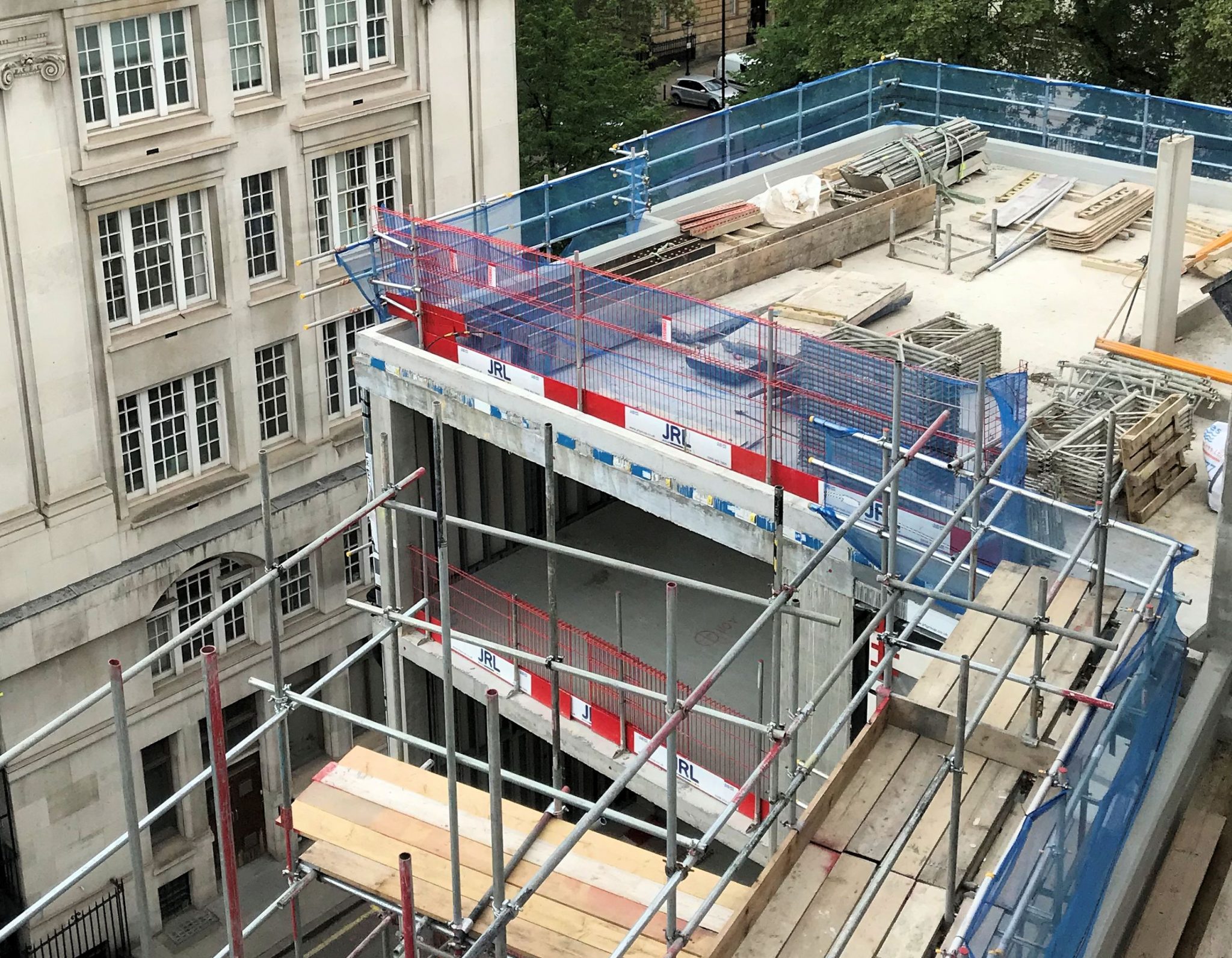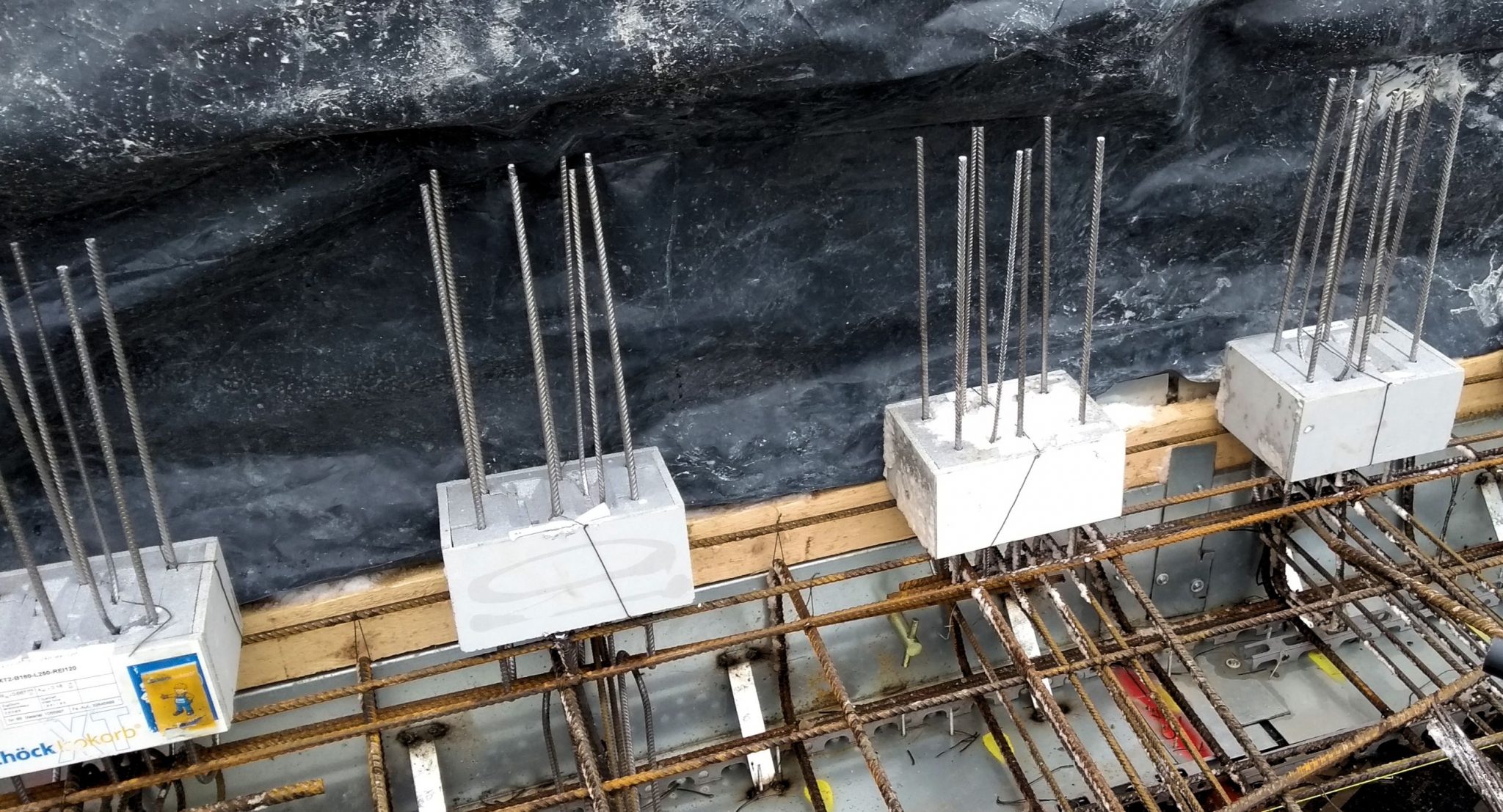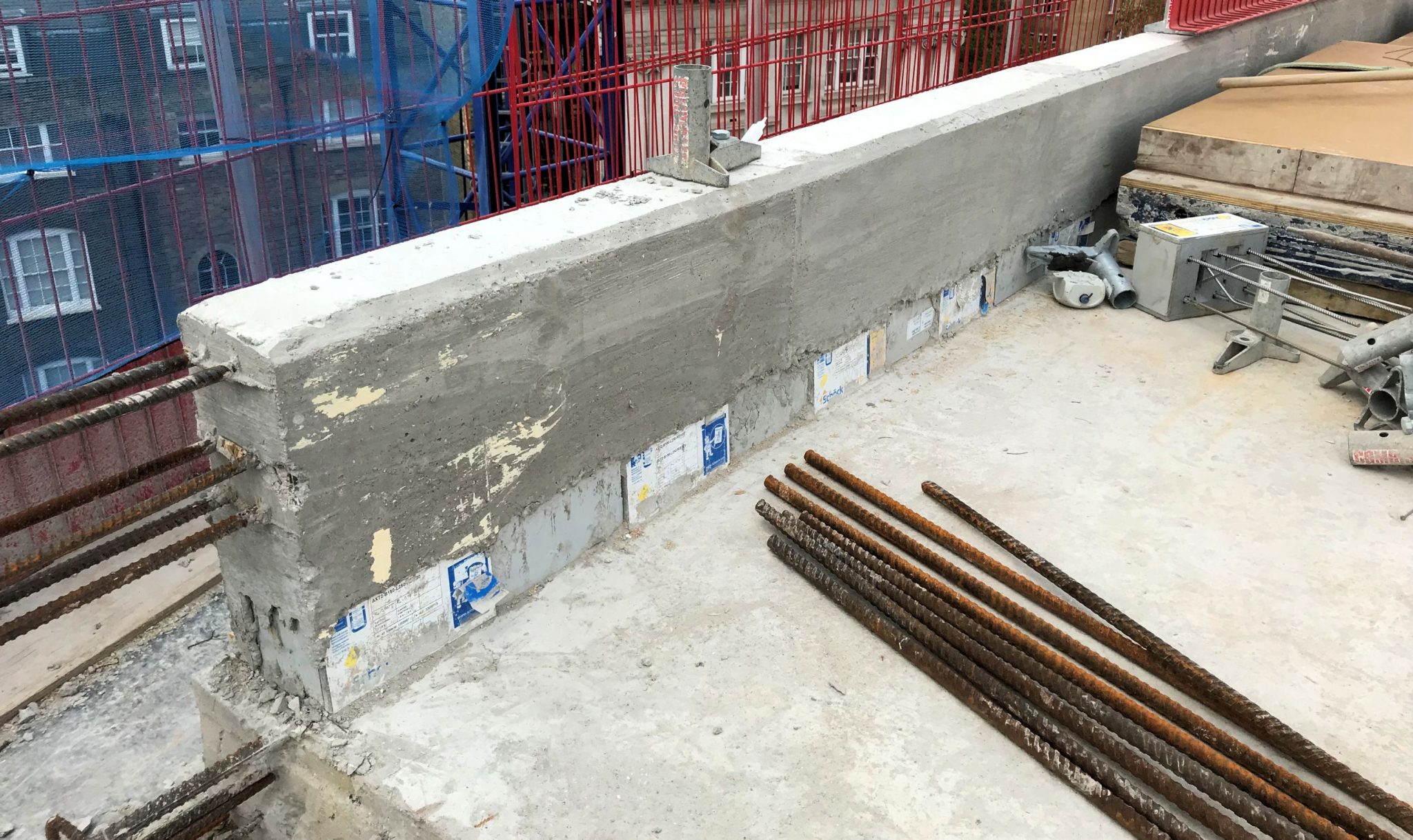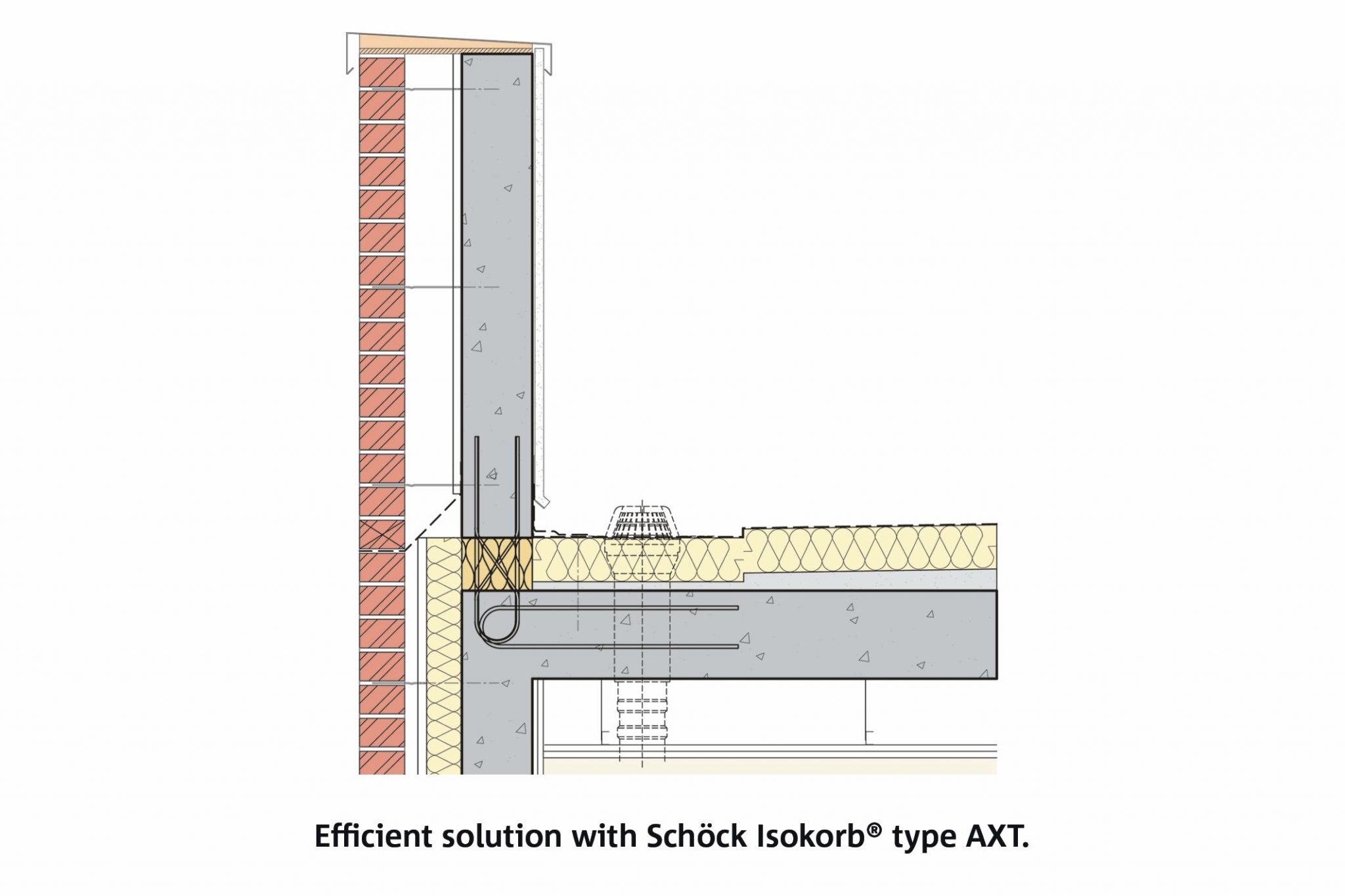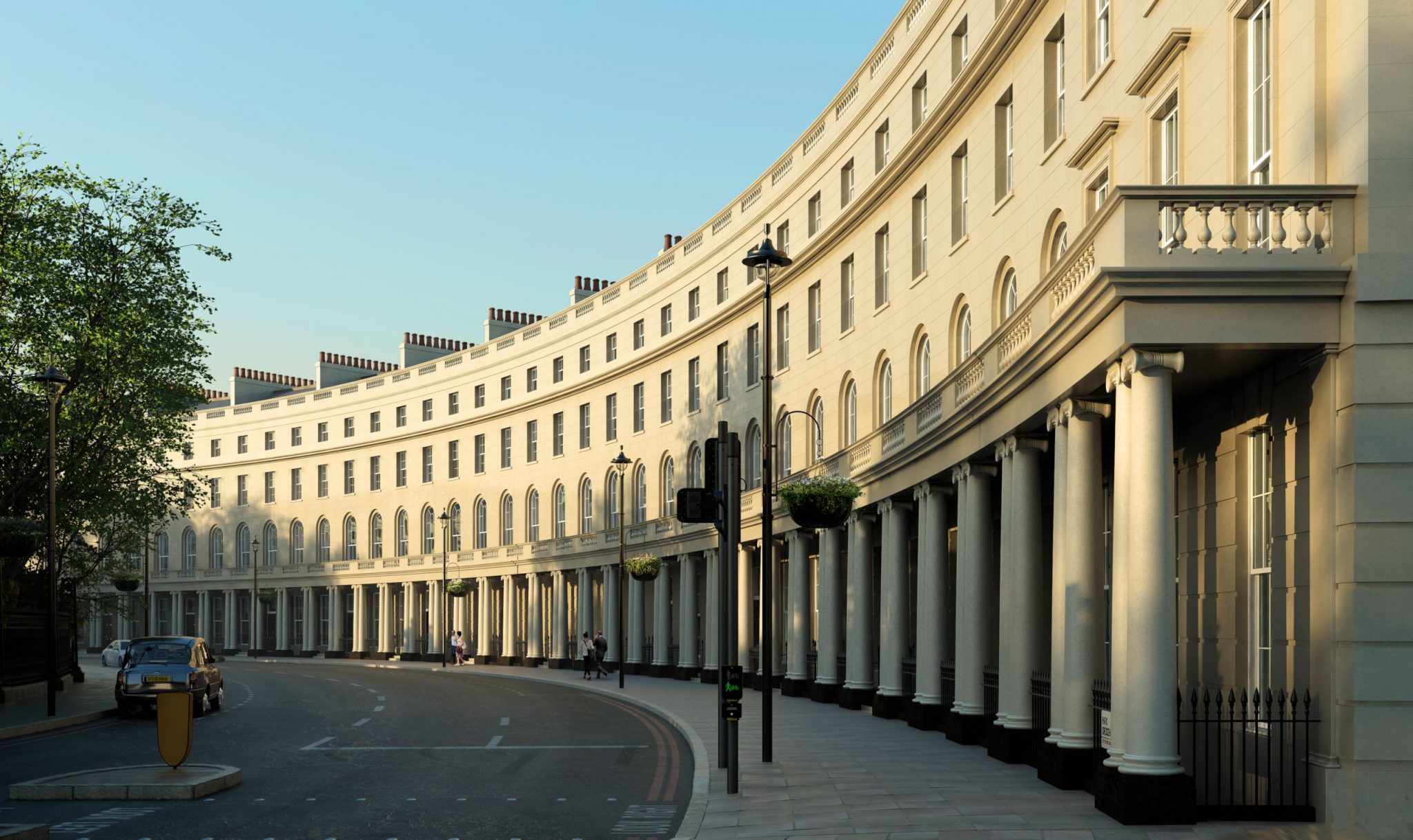
The Regent’s Park end of London’s Portland Place has been the scene of a significant number of astonished looks recently. As passers-by have discovered that the iconic Park Crescent West, a Grade 1 listed residential Regency terrace built by architect John Nash, is no more. However, all is not as it first seems. The original Nash terrace, completed in 1821, was badly damaged during the Second World War and restored in the 1960s to provide offices and residential accommodation. The work though was considered flawed and not true to the original. As a result this is now a very rare case where the demolition of the Grade I listed terrace ‘and its replacement with a more scholarly replica would preserve and enhance rather than obliterate its significance’. Renamed Regents Crescent, the project will see the post-war version of the terrace converted back to the residential use for which the early 19th Century building was intended. Rebuilt with new brickwork and stucco that represents the original Nash design; and with interiors that respond to the heritage character of the architecture, the finished development will result in up to 76 grand London residences, nine mews houses at the rear and private gardens.
Avoidance of thermal bridging is critical
The construction comprises a reinforced concrete frame with vertical concrete columns and horizontal flat slabs, stabilised by new reinforced concrete cores and walls. The roof structure constitutes a lightweight steel roof. The entire project is detailed to a very high level of specification and great attention has been paid to avoiding the risk of any potential thermal bridging problems. Preventing thermal bridging along the parapets was a critical consideration for such a high performance development, because as with balconies, parapets can allow conductive materials to transfer energy through the thermal barrier. Conventionally, in the majority of cases, the method of insulating parapets and parapet walls is to wrap the perimeter of the wall with an insulation barrier. However, the Schöck Isokorb used here offers a solution that is both more cost-effective and more thermally efficient than conventional wrapped parapets. Its 120mm insulation thickness results in low psi-values and therefore significantly reduces heat loss – and there is no wrapping required. It permits a more sophisticated construction opportunity for greater freedom of design and allows flexible distance between elements according to load requirements. An added benefit being there is no risk of any additional thermal bridging through balustrade fixings. Other key factors are durability and water impermeability. The Isokorb solution does not require maintenance and there is no risk of expensive restoration due to waterproofing problems. Another solution from the Schöck Isokorb range, a modular unit for steel-to-steel connectivity, is also utilised within the lightweight steel roof construction. This is a load-bearing thermal insulation element for connecting cantilevered steel girders to steel structures. It can be used to minimise the risk of therrmal bridging in new construction or renovation projects involving penetrating support structures such as canopy roofs, frame system crossbars or balconies. The modular design of this Isokorb type ensures that it can be adapted to all profile sizes and load bearing capacity requirements.
Totally verifiable performance
The Schöck product types used at Regent’s Crescent are for wrapped parapets and steel-to-steel connectivity, but the comprehensive Isokorb range from Schöck also offers solutions for concrete-to-steel situations and concrete-to-concrete. When any Isokorb product type is incorporated into residential buildings, the required fRsi value – the temperature factor used to indicate condensation risk that must be equal to or greater than 0.75 – is always comfortably met. The range also complies with the Government Standard Assessment Procedure, SAP 2012, concerning CO2 emissions from buildings and respectively heat losses through non-repeating thermal bridges.
Products meet full compliance with the relevant UK building regulations, have NHBC approval and offer LABC Registration. There is also the security of independent BBA Certification.
Contact Schöck on 01865 290 890; or visit the website at www.schoeck.co.uk for a free copy of the Schöck Thermal Bridging Guide; the Schöck Specifiers Guide and to view the full range of downloadable software.


